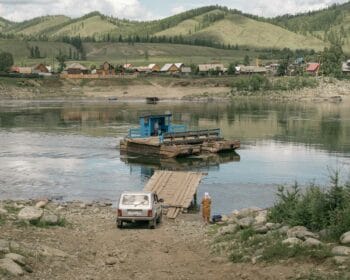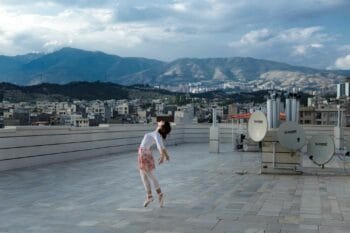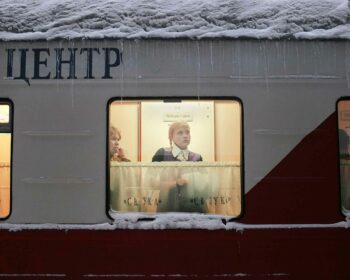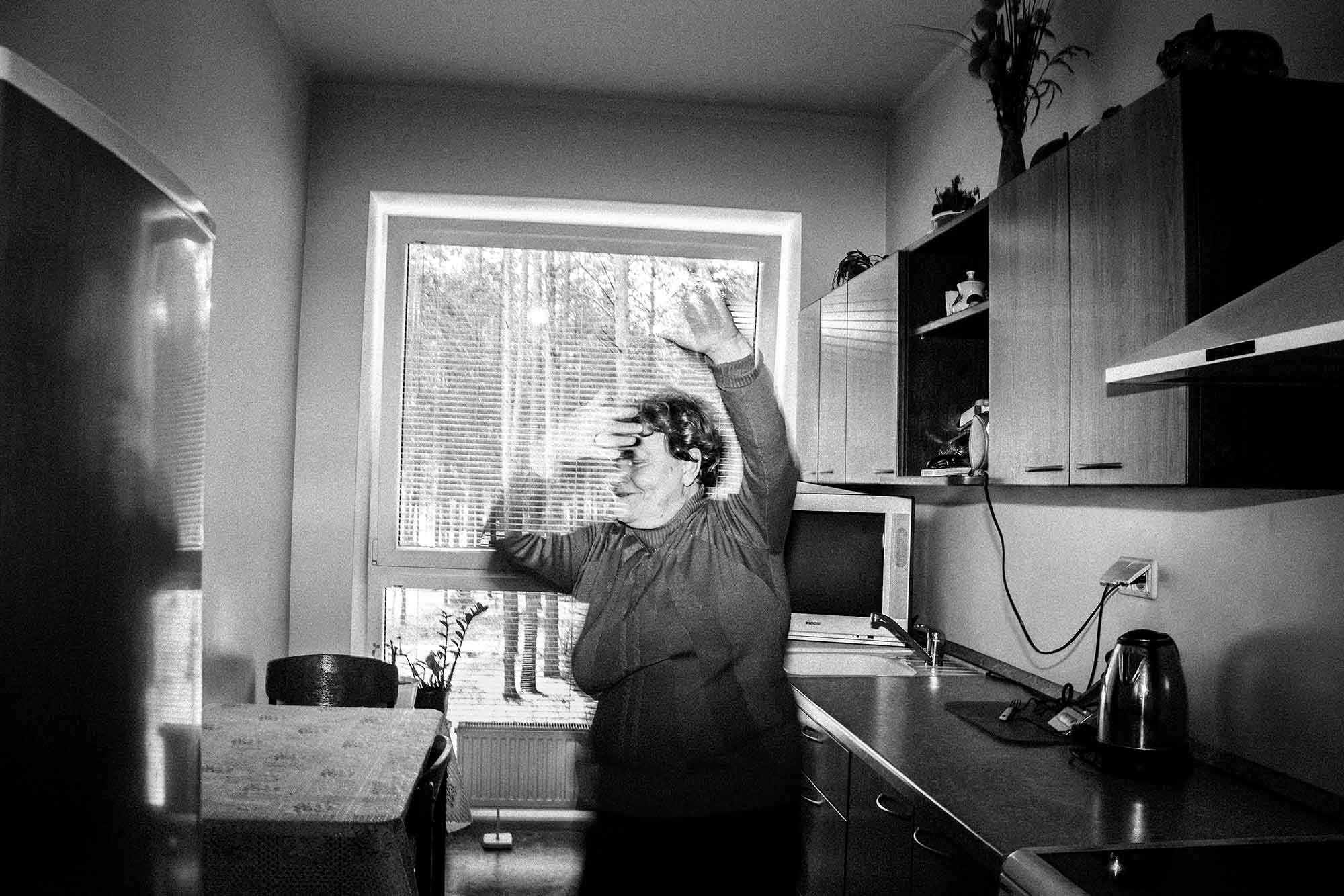 Varena, Lithuania on February 21, 2016: Teresa dances in her kitchen. 19 years earlier, her husband took his own life.
Varena, Lithuania on February 21, 2016: Teresa dances in her kitchen. 19 years earlier, her husband took his own life.
From trying to photograph the wind. Lithuania has the highest suicide rate in Europe.  Hannes Jung examines the background in his work “How is Life?”.
Hannes Jung examines the background in his work “How is Life?”.
In his photography, Hannes Jung has long been interested in how people deal with crises in life. As he walks across a bridge for research in South Korea, he sees a sign urging people not to throw themselves to their deaths. Back at home, he begins to research the subject of suicide.
He travels to Lithuania with a research grant from the Bosch Foundation. Together with a journalist friend, he wants to find out why the suicide rate in the Baltic state has been more than twice as high as the EU average for years. Not only the search for female protagonists, but also dealing with them poses difficulties.
Hannes knows that he definitely doesn’t want to retraumatize people through his work. “We had to respond to each person individually,” he recalls. Many of those affected tell him that, despite everything, it is good to be able to talk about their experiences. Some of the protagonists are pleased that Hannes has come all the way from Germany for the report.
Death is an abstract subject. To portray him is difficult. But Hannes concludes, “Maybe the wind can’t be photographed. But you can try to capture its effect, how it moves and changes the sea and the trees.”
The resulting work “How is Life” will be exhibited in Copenhagen, Brussels and Perpignan, among other places. He also takes the project to various photo editors: ZEIT magazine then sends him across Germany to photograph female jazz musicians in the same particular aesthetic. Hannes Jung wins the “n-ost Reportage-Preis” and the “Prix Mark Grosset” with the project, he also receives an award at the “College Photographer of the Year”.
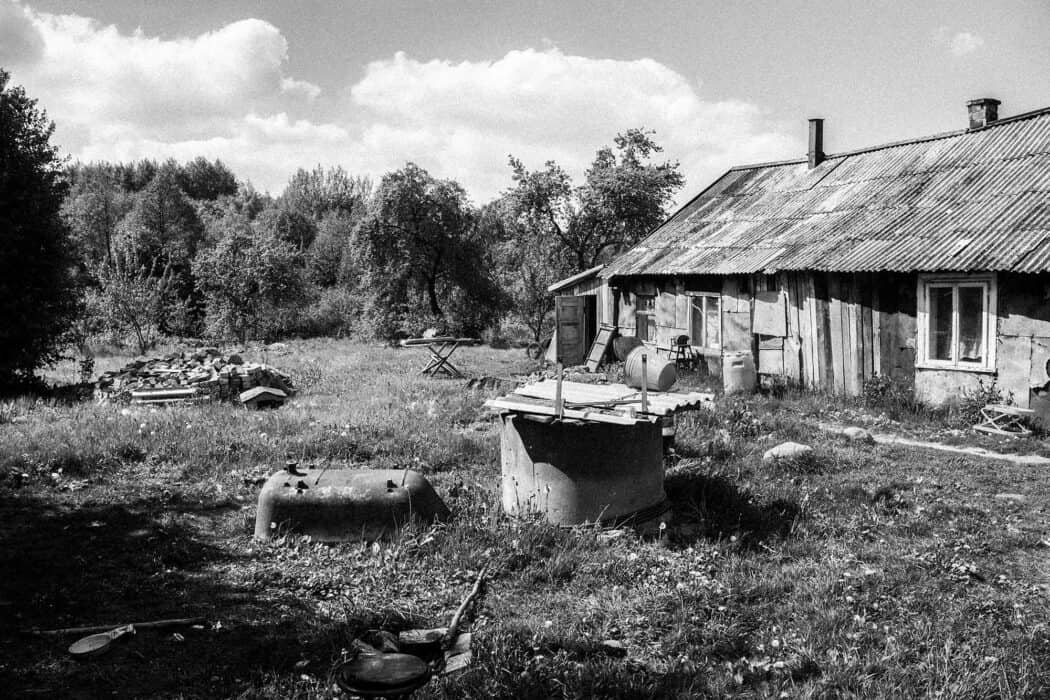 Katiliškiai, Lithuania on May 20, 2016: D.'s husband tried to kill himself in a well.
Katiliškiai, Lithuania on May 20, 2016: D.'s husband tried to kill himself in a well.
“I saw my husband going into the well, I got very scared. But I don’t remember what I was thinking. I asked him to get out. He answered me that he could not do it any more. With the help of my mother and daughter, we pulled him out.”
– D.
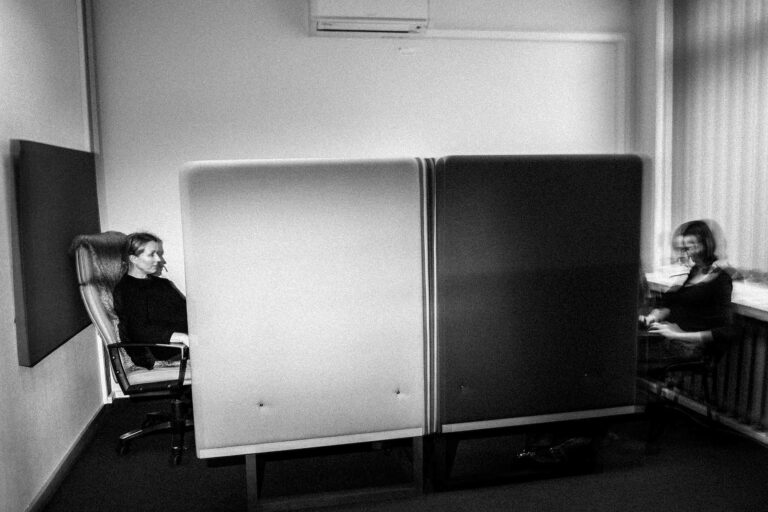 Vilnius, Lithuania on February 10, 2016 Volunteers of the emergency telephone "Youth line" work in Vilnius.
Vilnius, Lithuania on February 10, 2016 Volunteers of the emergency telephone "Youth line" work in Vilnius.
“Since I started working for Youth Line, I’ve been thinking about the concept of human free will. To what extent is suicide an impulsive, mechanical response to suffering? To what degree is it a personal choice to give up? I don’t know. But I always want to respect more a person’s own decision—whatever that may be. To stand together with the person and respect them.”
– Antanas, a Youth line volunteer
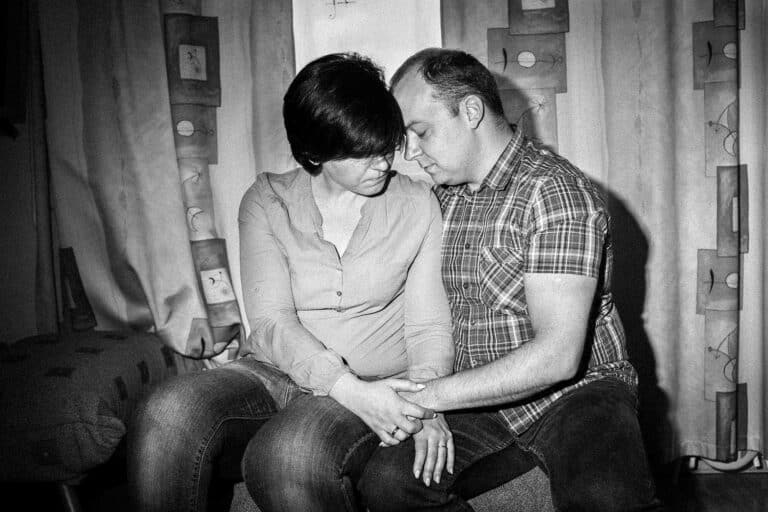 Kaunas, Lithuania on May 21, 2016: Edita sits with her husband Darius in their living room.
Kaunas, Lithuania on May 21, 2016: Edita sits with her husband Darius in their living room.
“I am sitting in the exact same place I was sitting when I learned that you had taken your own life. Here I sat, trembling and praying that it wasn’t true. I’m sorry I wasn’t the best daughter. I WANT you to know that I love you. I miss you so much. Sometimes on Sundays I still call your number. Or I wait for your calls. Sometimes I curl up in a ball on my bed and cry. That’s how much I miss you. Why did you tell me you’d always stick with me? When you’re gone, who else will I go to? I still remember you when you taught me how to ride a bike – you gave me the freedom to ride it. THANK YOU =) I am so happy, but I miss you so much. I don’t have a dad any more and I’m mad at you. You left me. I love you and dream about you often. You are my dad. Goodbye, I love you.”
– Edita
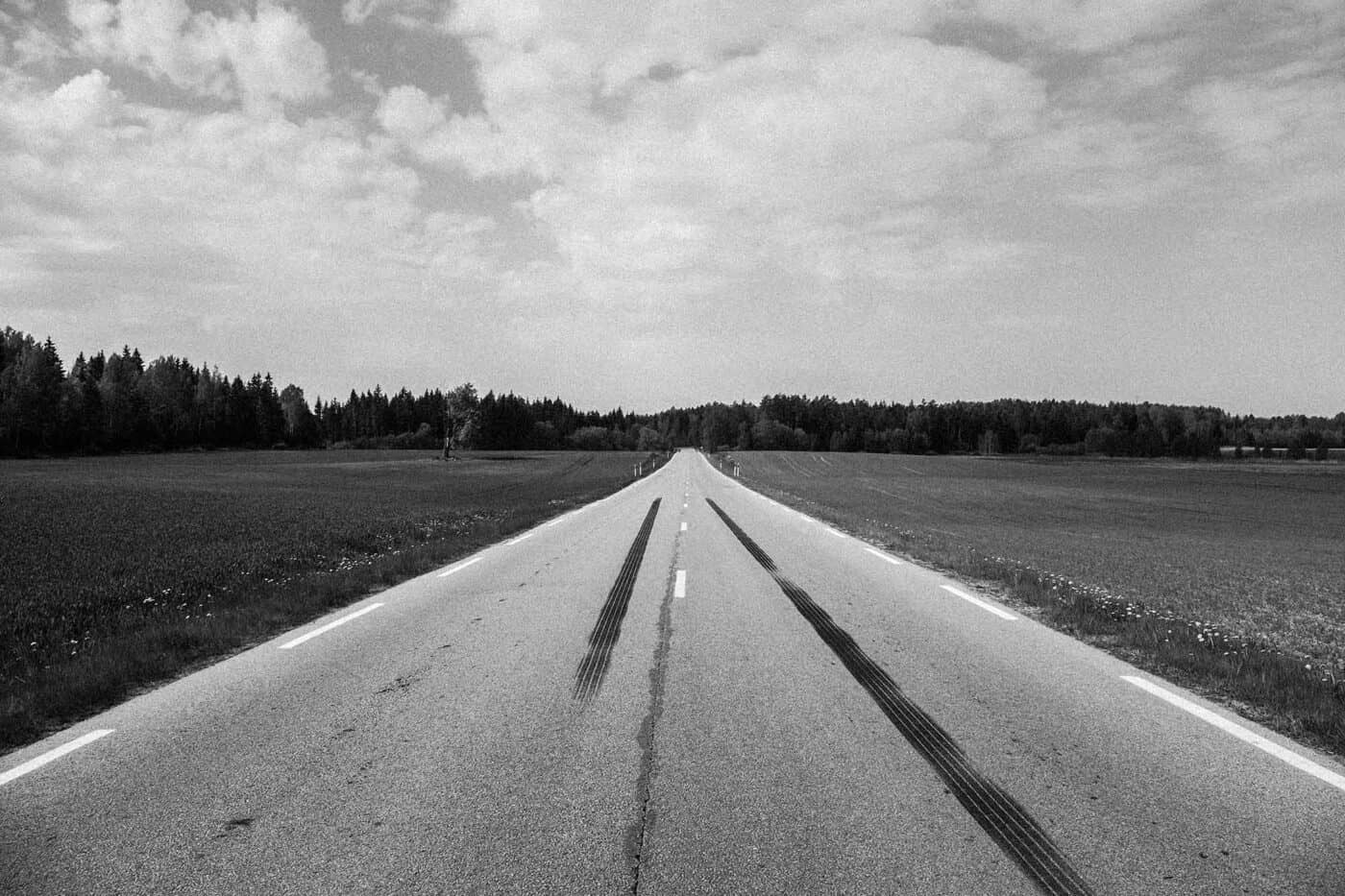 Panevėžys, Lithuania, on May 10, 2016: skid marks on a road.
Panevėžys, Lithuania, on May 10, 2016: skid marks on a road.
Lithuania has the highest suicide rate in Europe, one of the highest in the world. It is mainly men between 40 and 50 who are affected. Alcoholism, unemployment, lack of prospects—and of course many cases to which little of this applies. Each suicide is individual. It is not an expression of personal freedom but is often motivated by hopelessness and illness. Suicide is frequently influenced by external, social, and environmental factors.
Perhaps the wind cannot be photographed. But you can try to capture its effect, how it moves and changes the sea and the trees.
 Hannes Jung
Hannes Jung
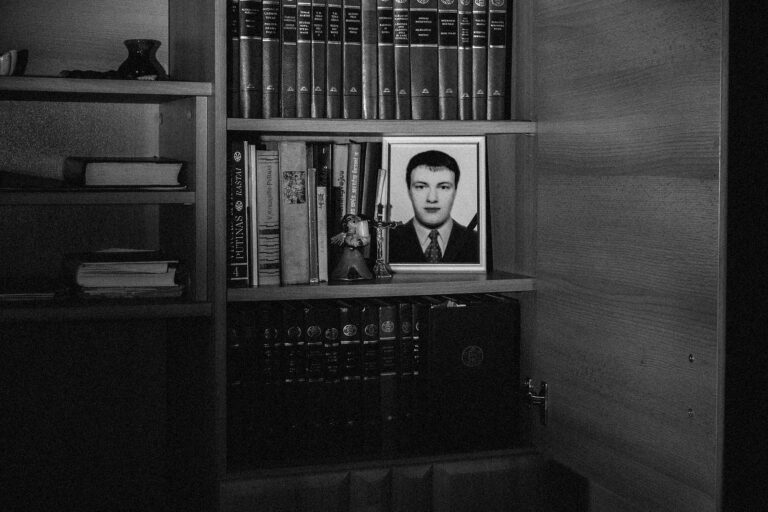 Panevėžys, Lithuania, on March 1, 2018: In Eugenia's living room cupboard is the picture of her dead son Petras.
Panevėžys, Lithuania, on March 1, 2018: In Eugenia's living room cupboard is the picture of her dead son Petras.
“Be not alone, we are all of the one and same world. May no one voluntarily take their own life, for it is a gift.”
– Eugenia
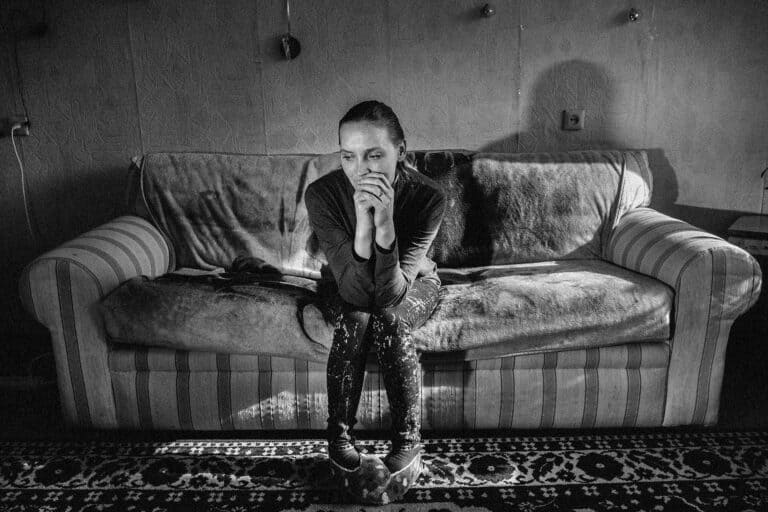 Zarasai, Lithuania on March 6, 2018: Asta poses for a portrait in her living room/bedroom. She grew up under difficult circumstances
Zarasai, Lithuania on March 6, 2018: Asta poses for a portrait in her living room/bedroom. She grew up under difficult circumstances
“Once I told my son that I would like to die so that all worries would be gone. But my son burst into tears and asked me, ‘Mom, who would love me then, who would need me?’ It was heartbreaking.”
– Asta
 Varena, Lithuania on February 26, 2016: The forest near Varena.
Varena, Lithuania on February 26, 2016: The forest near Varena.
In Varena, the suicide rate is the highest in Lithuania.
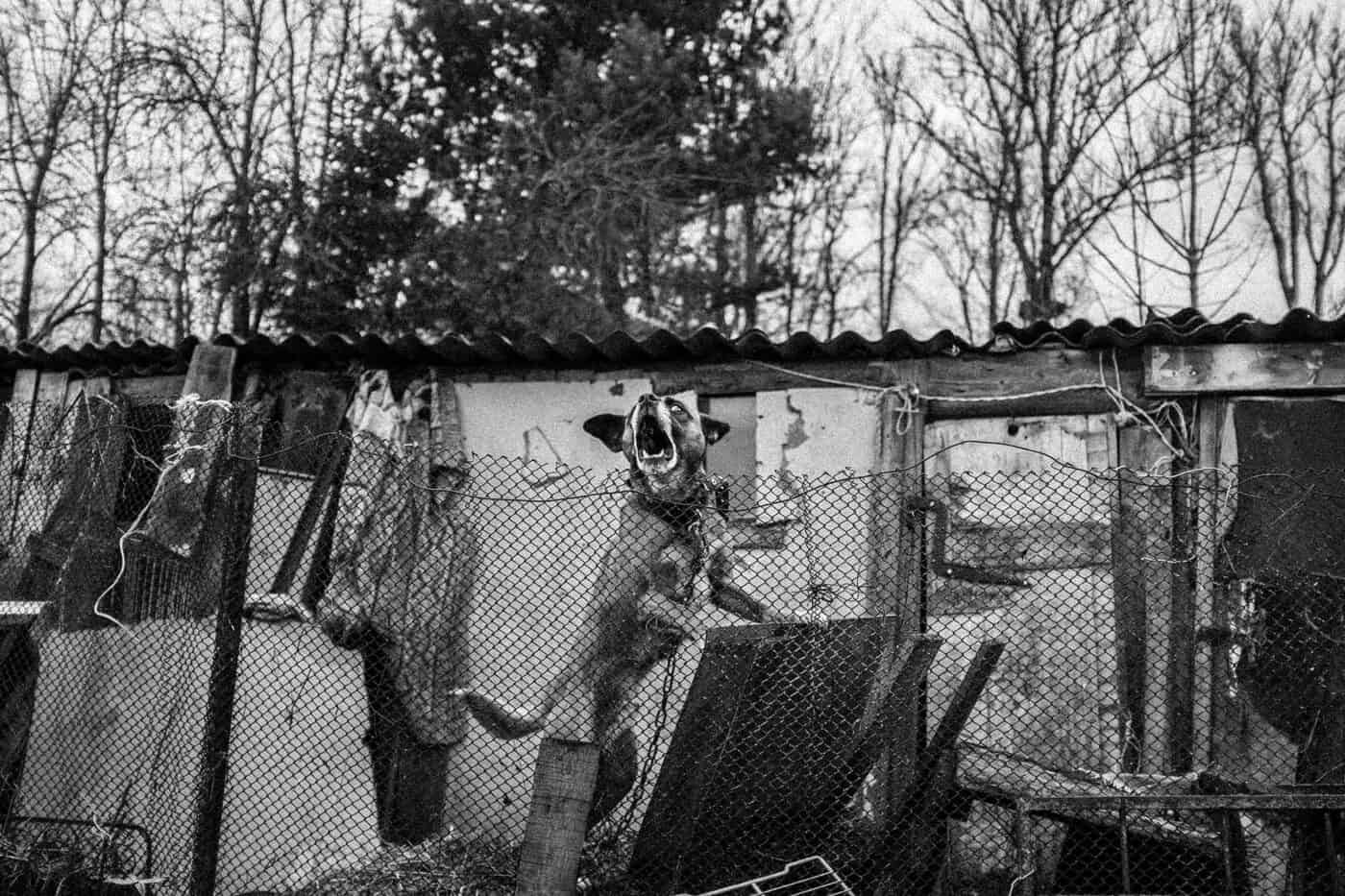 Salamiestis, Lithuania on January 29, 2016: A dog barks in Janina's Garden.
Salamiestis, Lithuania on January 29, 2016: A dog barks in Janina's Garden.
Janina’s family struggles with social problems.
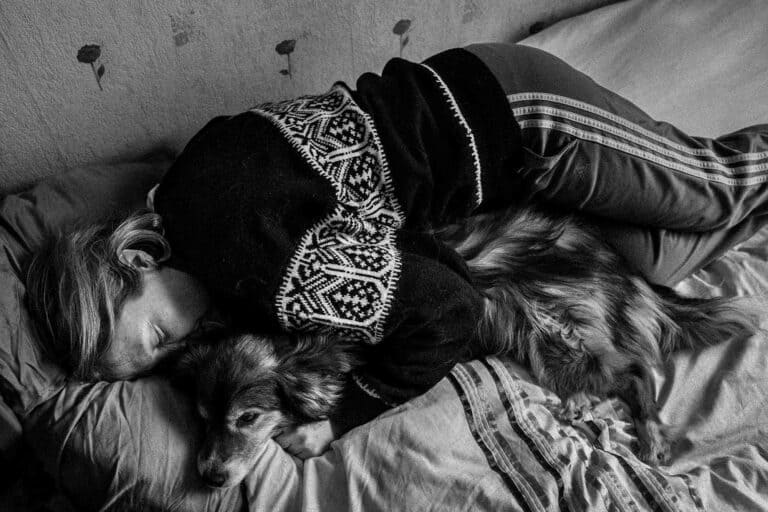 Kupiskis, Lithuania on January 30, 2016: portrait of Donata with her dog Mikutis in bed.
Kupiskis, Lithuania on January 30, 2016: portrait of Donata with her dog Mikutis in bed.
Donata fell ill with depression 18 years ago – during and after her divorce from her then-spouse. Her dog helped her get out of bed every morning to go for a walk with him.
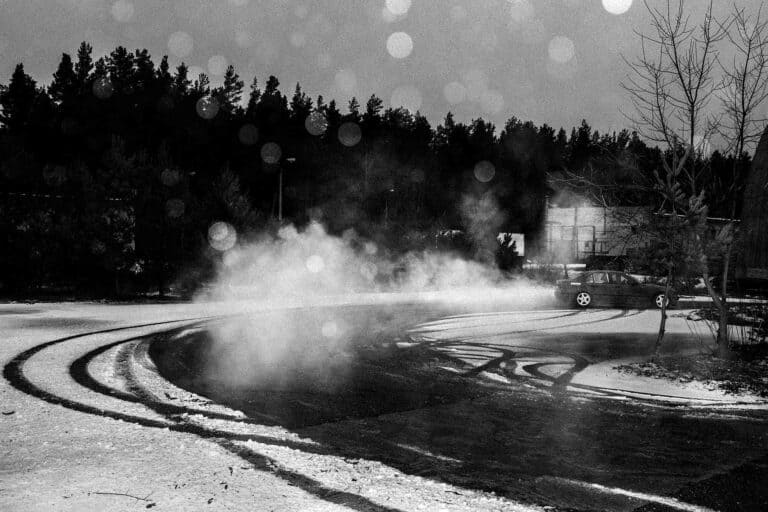 Varena, Lithuania on February 20, 2016: A homemade racetrack near Varena.
Varena, Lithuania on February 20, 2016: A homemade racetrack near Varena.
“My favourite colours are black and white, so I can dive head first into all of life’s activities with passion. I try to take the kids under my wing, so they can learn, recognize and be guided by life’s road signs.”
– Gintautas, founder of a youth centre in Varena, the region with the highest suicide rate in Lithuania.
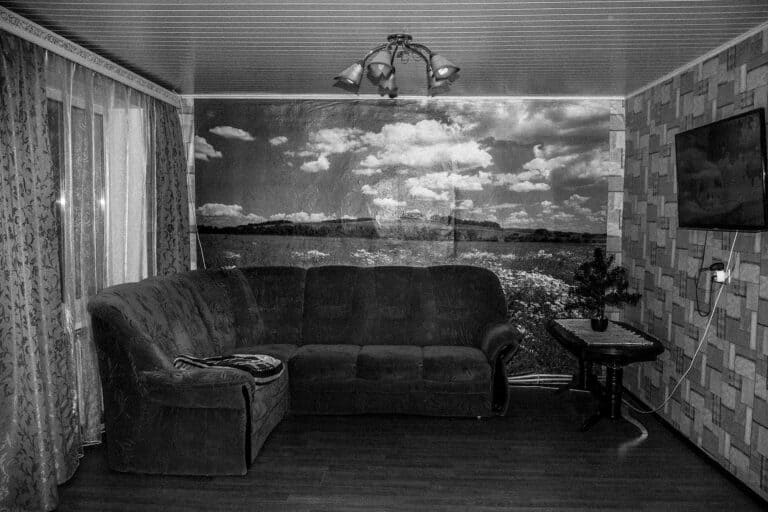 Radeikiai, Lithuania on January 29, 2016: A landscape wallpaper hangs in the living room of a farmer's family.
Radeikiai, Lithuania on January 29, 2016: A landscape wallpaper hangs in the living room of a farmer's family.
In Lithuania, mainly people from rural areas commit suicide.
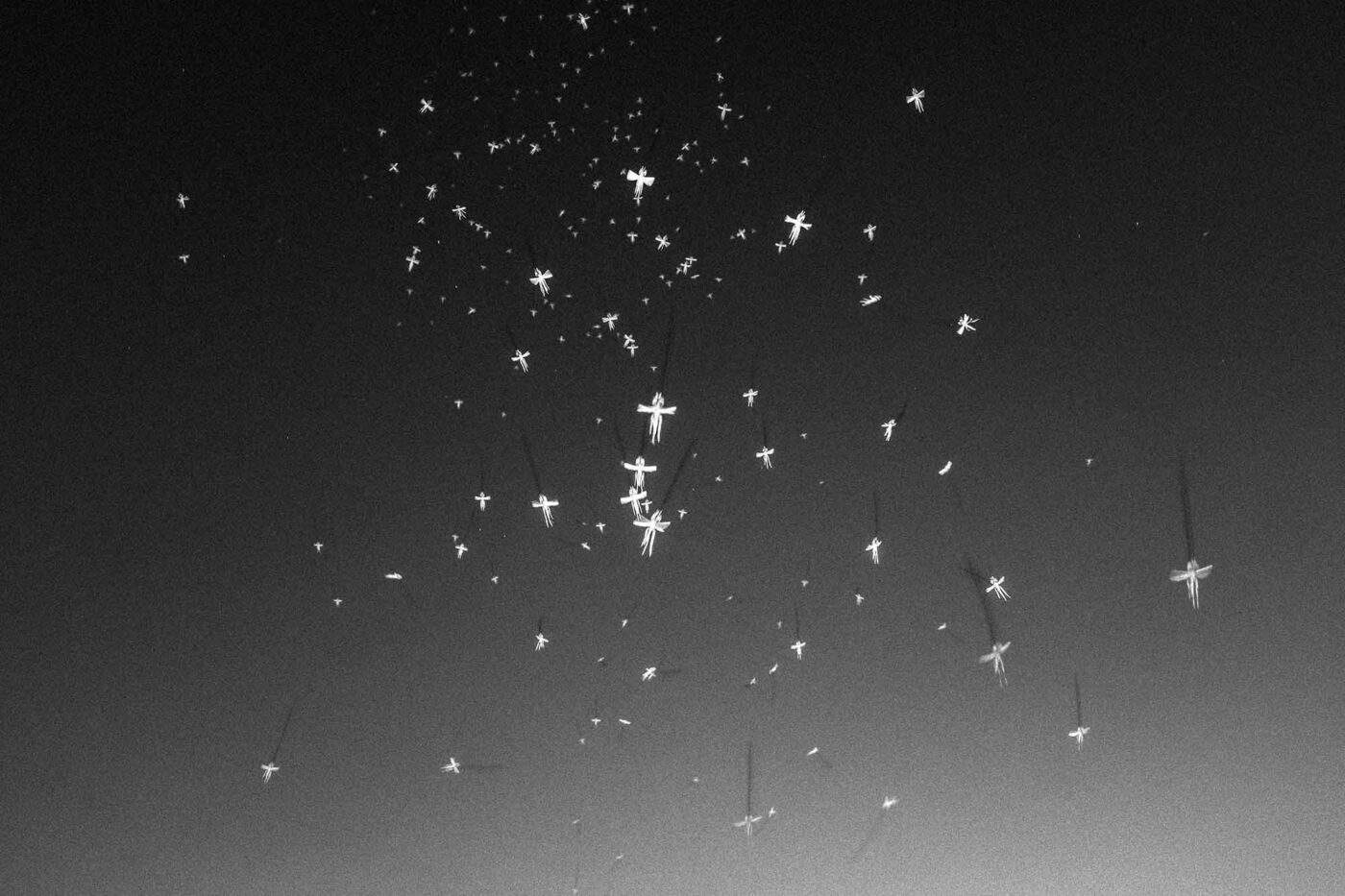 Kupiskis, Lithuania on May 9, 2016: Mosquitoes fly over a lake near Vilma's home.
Kupiskis, Lithuania on May 9, 2016: Mosquitoes fly over a lake near Vilma's home.
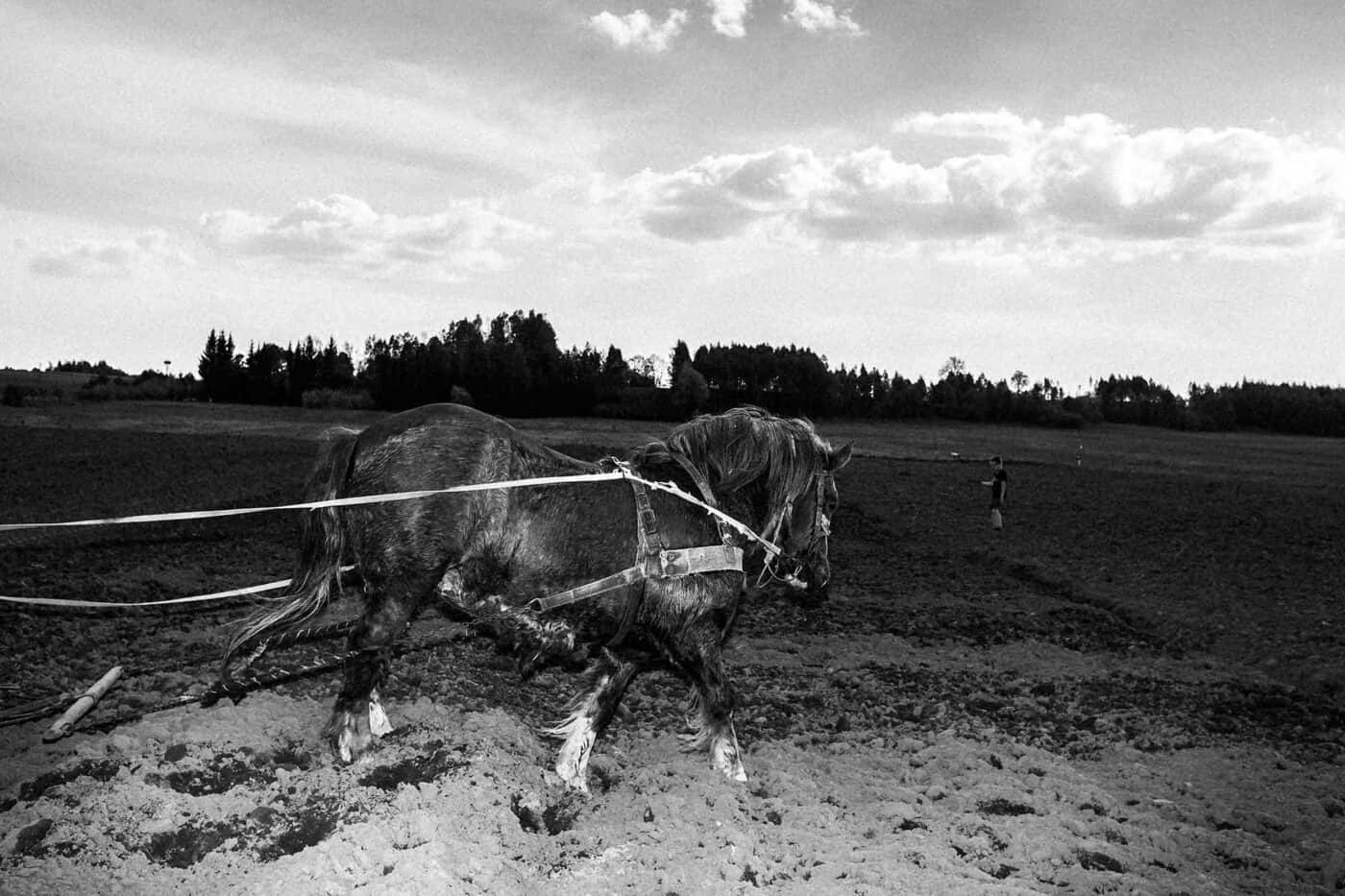 Pagėgiai, Lithuania, on May 11, 2016.
Pagėgiai, Lithuania, on May 11, 2016.
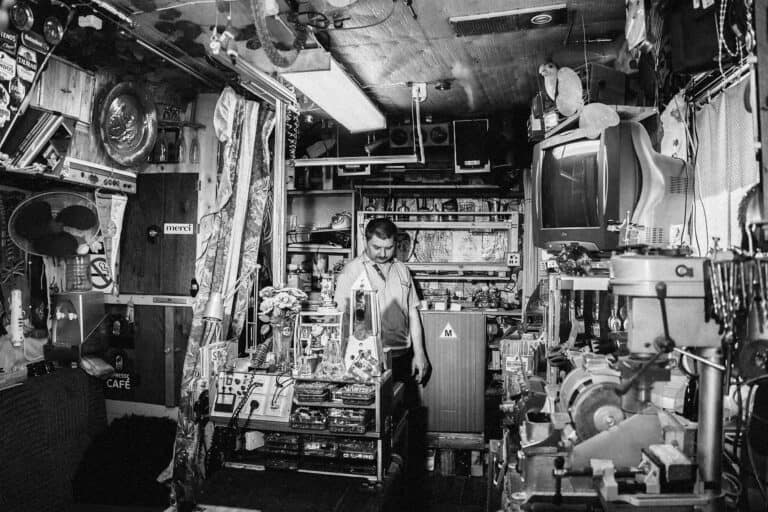 Marijampolė, May 20, 2016: Vaidas poses for a portrait in his workshop.
Marijampolė, May 20, 2016: Vaidas poses for a portrait in his workshop.
“My name is Vaidas and I have been diagnosed with depression. I have difficulty dealing with it because I have severe headaches and discomfort all over my body. This is because my body has been in shock since an injury. The longer I live with it, the more unsure I am about how I want to live with it.”
— Vaidas
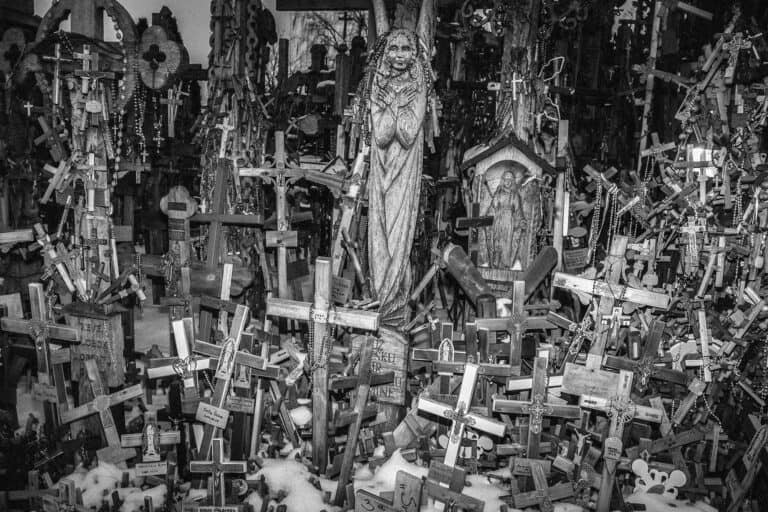 Šiauliai, Lithuania on February 23, 2018
Šiauliai, Lithuania on February 23, 2018
A hill of crosses is a place of pilgrimage.
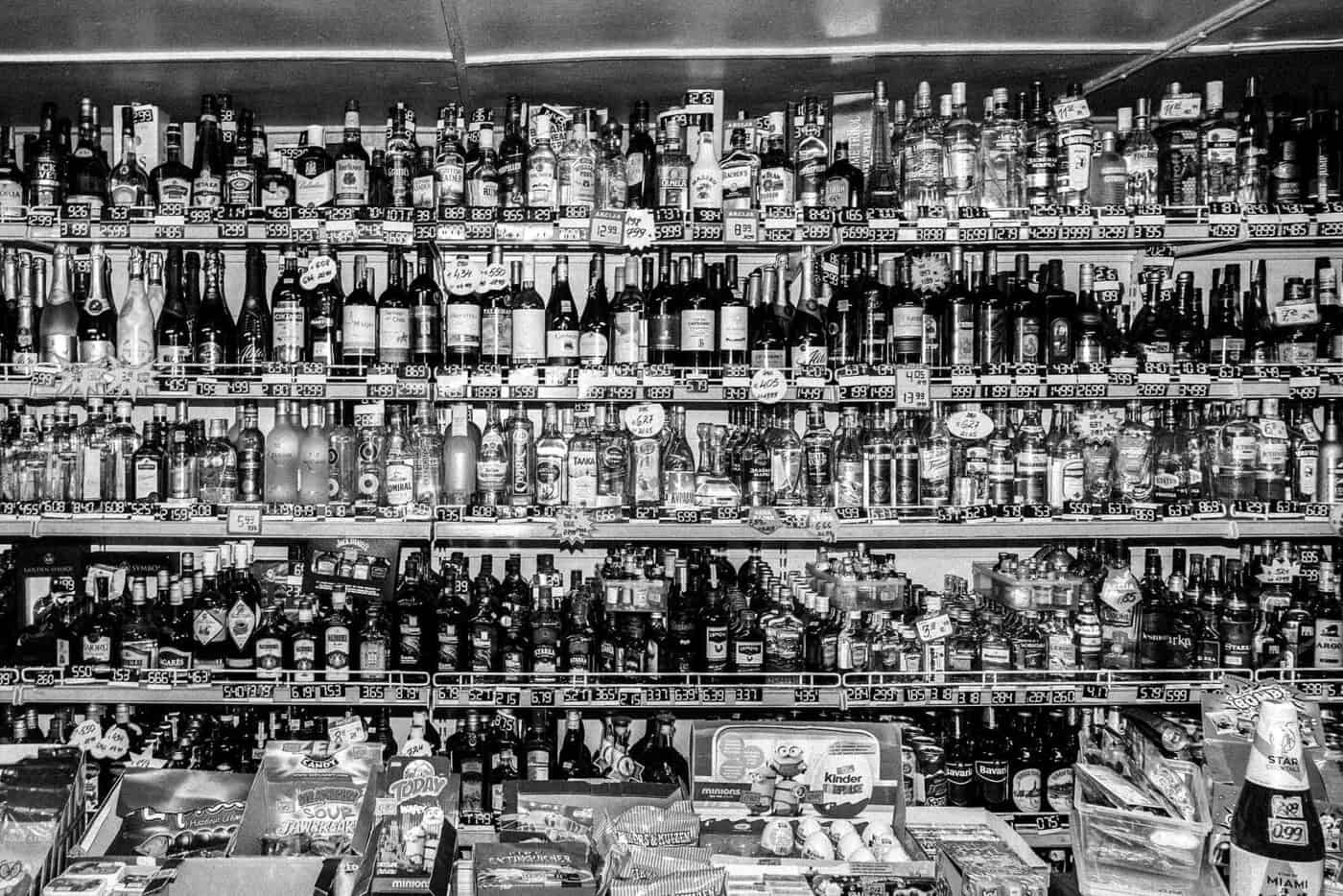 Varena, Lithuania, on February 25, 2016: A shelf with alcoholic beverages stands in a small store in Varena.
Varena, Lithuania, on February 25, 2016: A shelf with alcoholic beverages stands in a small store in Varena.
According to the WHO, Lithuania has one of the highest alcohol consumption rates in the world.
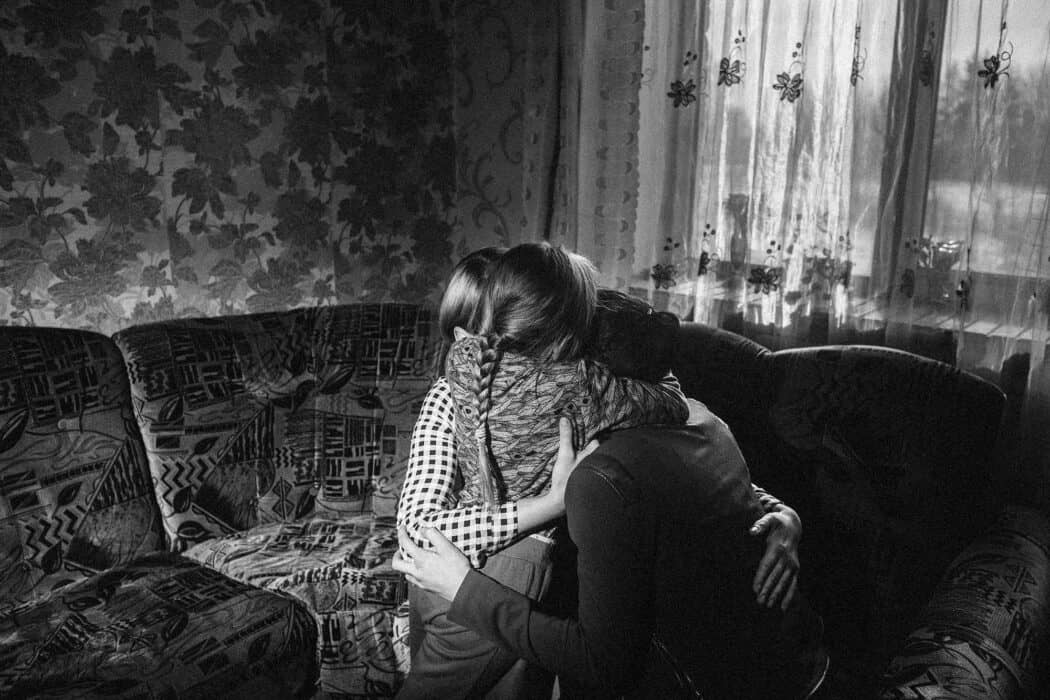 Joniskis, Litaen, on February 28, 2018: Vitalja and her two daughters
Joniskis, Litaen, on February 28, 2018: Vitalja and her two daughters
“I tried to scare my husband by trying to kill myself. He couldn’t have cared less. All I did was scare my children. I don’t think you can change anything by suicide. You will only hurt and destroy the people who love you. The ones closest to you.”
– Vitalya
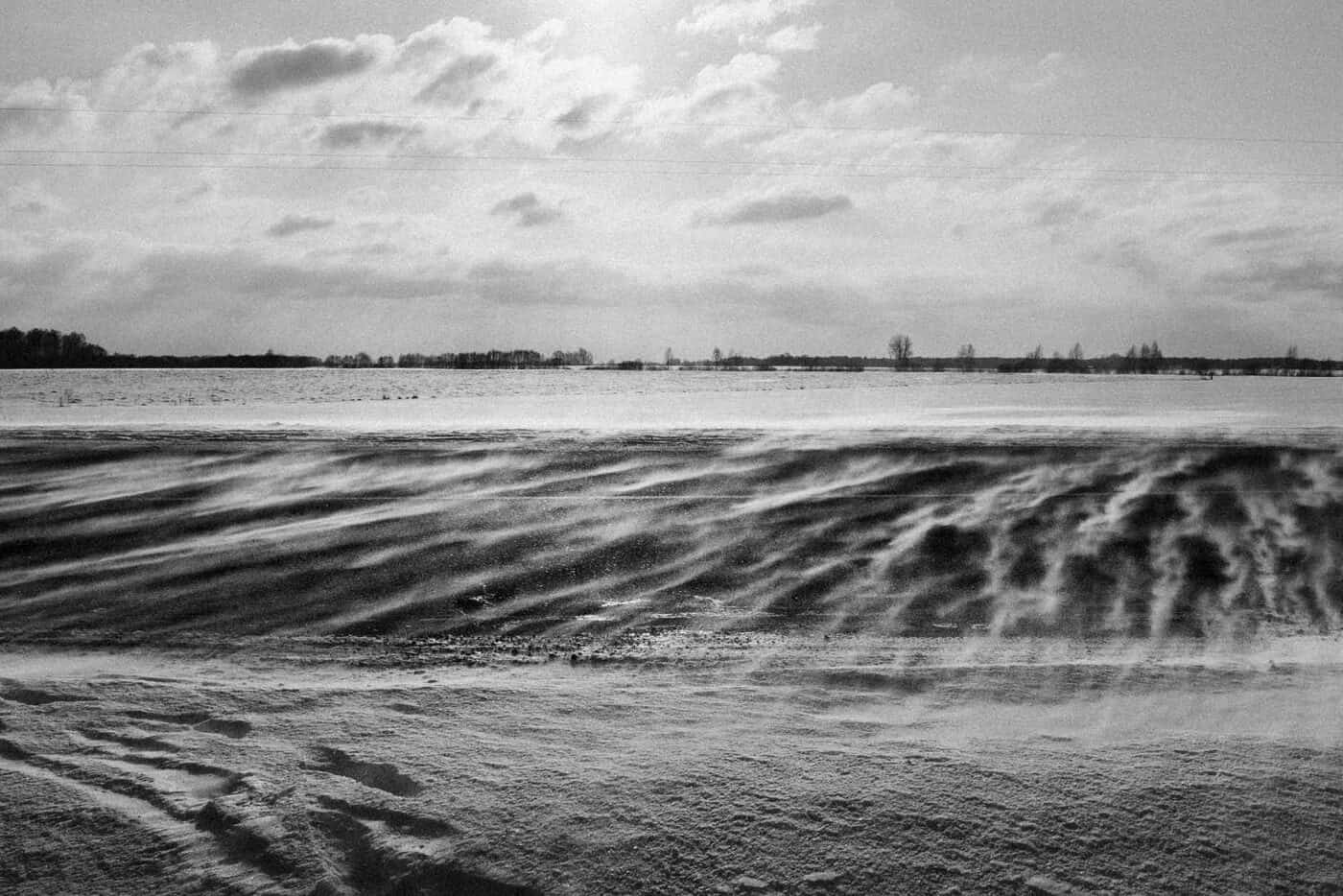 Kupiskis, Lithuania on February 27, 2018.
Kupiskis, Lithuania on February 27, 2018.
Help with suicidal thoughts
If your thoughts revolve around taking your life, various organizations offer help and ways out:
Telephone counselling: 0800/111 0 111 or 0800/111 0 222. There, employees are available around the clock, with whom concerns and fears can be shared. The telephone counselling service also offers a chat.
For children and young people, there is also the “Nummer gegen Kummer” (number against sorrow) – available Monday to Saturday from 2 to 8 p.m. on 11 6 111 or 0800/111 0 333. Mail counseling for young people is also available through the U25 Germany website and through Jugendnotmail.
Help – also in Turkish – is offered by the Muslim pastoral care telephone “MuTeS” at 030/44 35 09 821. The employees there are available 24 hours a day.
The German Society for Suicide Prevention has listed an overview of other services:
Your contact partners will be happy to assist you with your personal concerns. However, due to the large number of enquiries, we ask you to first check our FAQ to see if your question may already have been answered.
Dean of Studies, Design and Media department
Programme representative
Hochschule Hannover
Faculty III – Media, Information and Design
Expo Plaza 2
D-30539 Hanover
